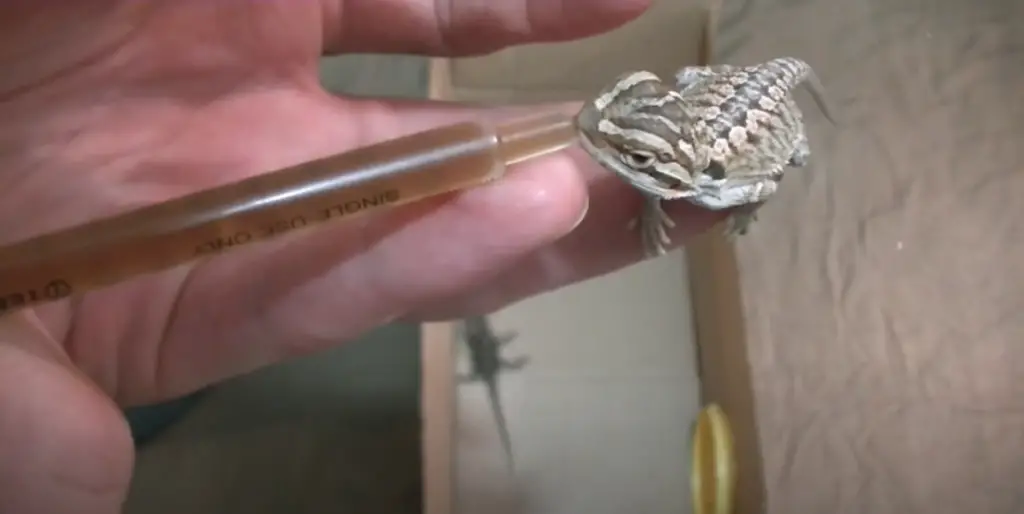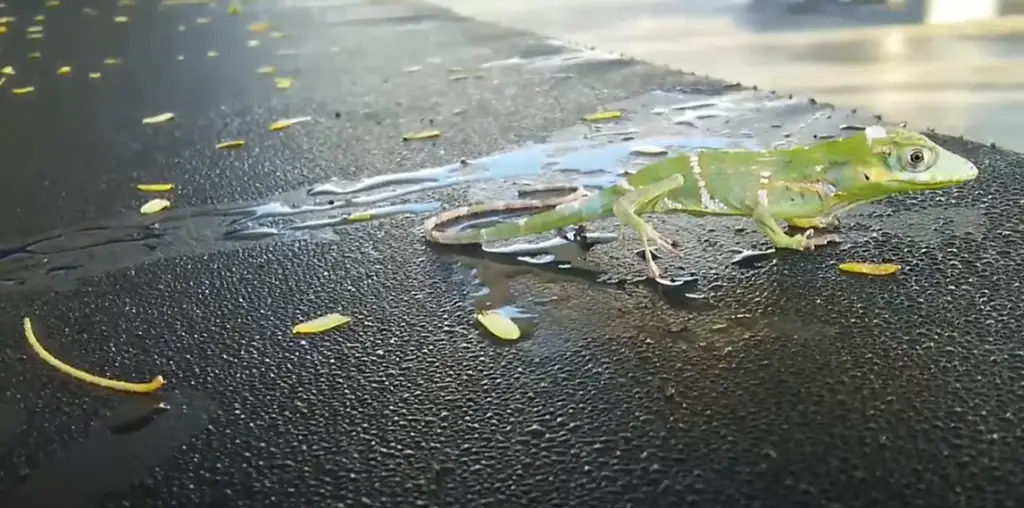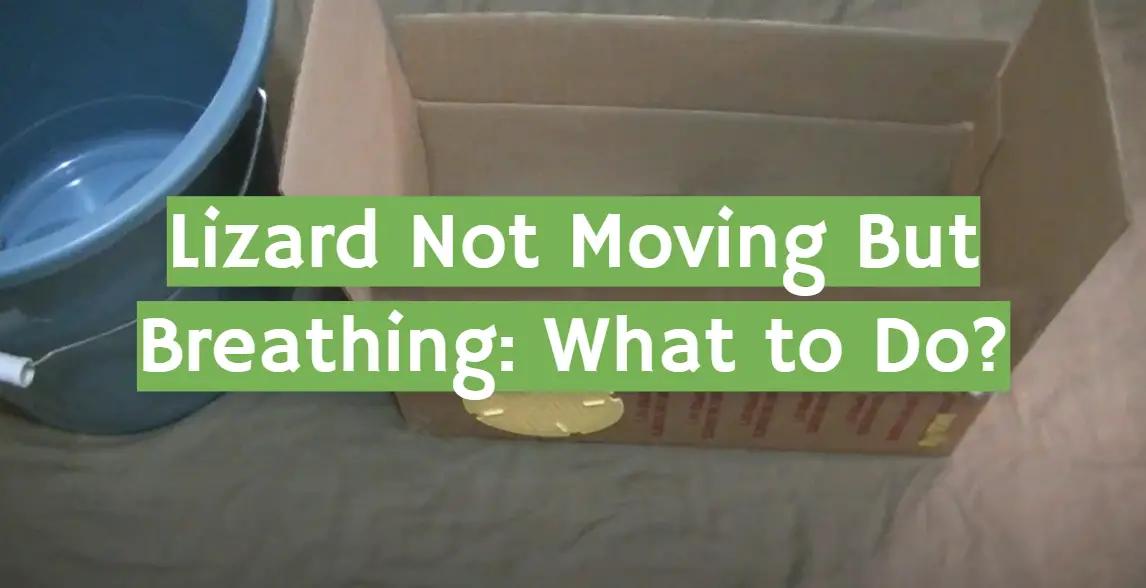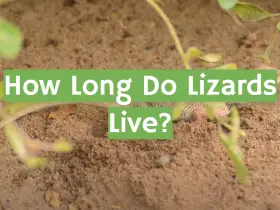When you come across a lizard that isn’t moving, the first thing you might think is that it’s dead. However, there are several reasons why a lizard might not be moving, and many of them don’t involve death. In this article, we’ll discuss some common reasons why a lizard might be stationary but still breathing. We’ll also provide tips on how to care for a non-moving lizard, and when to call a veterinarian. So keep on reading!
Reasons Why Lizard Not Moving But Breathing
There are several potential reasons why a lizard might be stationary but still breathing. Some of the most common are:
- It’s Brumating: Lizards, like many reptiles and amphibians, engage in brumation to survive cold winter months. During this period, they slow down their metabolism, become less active and appear almost lifeless. To determine if your lizard is brumating or simply not moving because of illness or injury, look for other signs such as burrowing under rocks and leaves or staying in one place for lengthy periods of time.
- It’s Sick: If your lizard isn’t eating or drinking, it may be ill from an infection like parasites or something else that requires veterinary care. If your lizard is still moving around and seems to be in pain, take it to a vet for an examination.
- It’s Injured: If your lizard has been injured, it may not be able to move or may be trying to stay still so that the injury can heal. Many common injuries like broken legs or tail fractures can often be treated with splints or bandages. [1]
Lack of appetite
One of the most important signs that something is wrong with your lizard is a lack of appetite. Lizards don’t always eat every day, but if yours hasn’t eaten in days or weeks, it could be sick or injured. Make sure you offer appropriate food for your species, and if your lizard isn’t eating, take it to the vet for an examination.

Fewer droppings
Another sign of illness or injury is a decrease in droppings. If the number and frequency of your lizard’s droppings have decreased significantly, it could be a sign that something isn’t right. With this, you should also take it to the vet for an examination.
Lethargy
If your lizard is lethargic and unresponsive to stimuli, it could be a sign of an underlying medical condition. Lethargy can also be a sign of dehydration or malnutrition, so make sure you are providing your lizard with access to fresh water and the right food for its species.
Sunken eyes
If your lizard’s eyes are sunken and appear to be receding into its skull, this is a sign that it needs medical attention immediately. In most cases, this means that the lizard is dehydrated and in need of immediate treatment.
Weight loss
If your lizard is slowly losing weight, even if its appetite hasn’t changed, it could be a sign of an underlying medical condition or injury that needs to be addressed. Make sure you are offering enough food and provide fresh water regularly.
A Knowledgeable Owner Makes for a Healthy Lizard
It’s important to remember that a knowledgeable owner makes for a healthy lizard. If your lizard isn’t moving but is still breathing, take the time to investigate what might be wrong and address any medical issues promptly. With the right care and attention, you can help ensure your pet lizard has a long and happy life!
What happens if a lizard doesn’t move?
If a lizard is not moving, but is still breathing, then it is likely that the lizard is in shock. Shock can be caused by a number of factors, including extremes of temperature or sudden changes in environment. It may also occur due to injury or stress from being handled too roughly or for too long. [2]
Why do lizards stop moving?
Lizards may stop moving for a variety of reasons. The most common is brumation, which is a hibernation-like state that lizards enter when the temperature gets too cold. In this state, they become less active and appear almost lifeless. Other causes include illness, injury, dehydration, malnutrition, or simply being in shock due to sudden environmental changes.
How do you know if a lizard is in distress?
If a lizard is not moving but is still breathing, it may be in distress. Signs of distress include labored or shallow breathing, an unusually cold body temperature, and lack of response to stimuli. Depending on the species of lizard, other signs of distress may appear as well. It is important to observe your lizard closely and take note if you notice any changes in its behavior or condition.
Can lizards play dead?
In some cases, lizards may appear to be playing dead when they are actually in shock. This is especially true if the lizard was recently handled or moved to a new environment. If your lizard appears to be playing dead but is still breathing, take it to the vet for an examination as soon as possible. [3]

FAQ
Can lizards heal themselves?
In some cases, lizards may be able to heal themselves if their environment and diet are appropriate for the species. However, if a lizard is injured or ill, it should be taken to a veterinarian immediately for proper diagnosis and treatment.
Can a lizard’s legs heal?
In some cases, a lizard’s legs may heal if the injury is minor. However, if the leg is broken or there is any sign of infection, it should be taken to a veterinarian for treatment as soon as possible.
Can lizards go into shock?
Yes, lizards can go into shock if they experience trauma or environmental changes. This is a life-threatening condition that must be treated quickly. Signs of shock in lizards include shallow breathing, weak pulse, abnormal temperature, and lack of movement. If you notice any of these symptoms in your lizard, take it to the vet immediately.
Do lizards feel pain?
Yes, lizards do feel pain. If your lizard is in pain, it may show signs such as hissing or trying to bite. It is important to seek medical attention for a hurting lizard as soon as possible. [4]
How do you help an injured lizard?
If you suspect your lizard is injured, take it to the veterinarian immediately. In some cases, a vet may be able to stitch up the wound or offer pain relief medications. It is important to keep an injured lizard warm and hydrated while waiting for medical attention.
Useful Video: How to help lizards that refuse to eat or have low energy recover
Conclusion
Reptiles are very sensitive to their environments and can get stressed easily. If your lizard is not moving but appears to be breathing, it is likely that it is experiencing stress of some sort. Try to create a more relaxed environment for your lizard by decreasing noise and activity levels near its enclosure. You might also want to mist the enclosure lightly with water or provide some hiding places for your pet. If you have tried these things and your lizard still isn’t moving, it’s best to take it to see a vet.
References:
- https://reptilesmagazine.com/reptile-lifeless-and-gasping
- https://news.miami.edu/stories/2022/01/why-do-lizards-plummet-in-the-cold.html
- https://www.scielo.br/j/bn/a/DrFx8Y4xRwMnKdJ3KYqMQwt/?lang=en
- https://pubmed.ncbi.nlm.nih.gov/29146025






Leave a Review